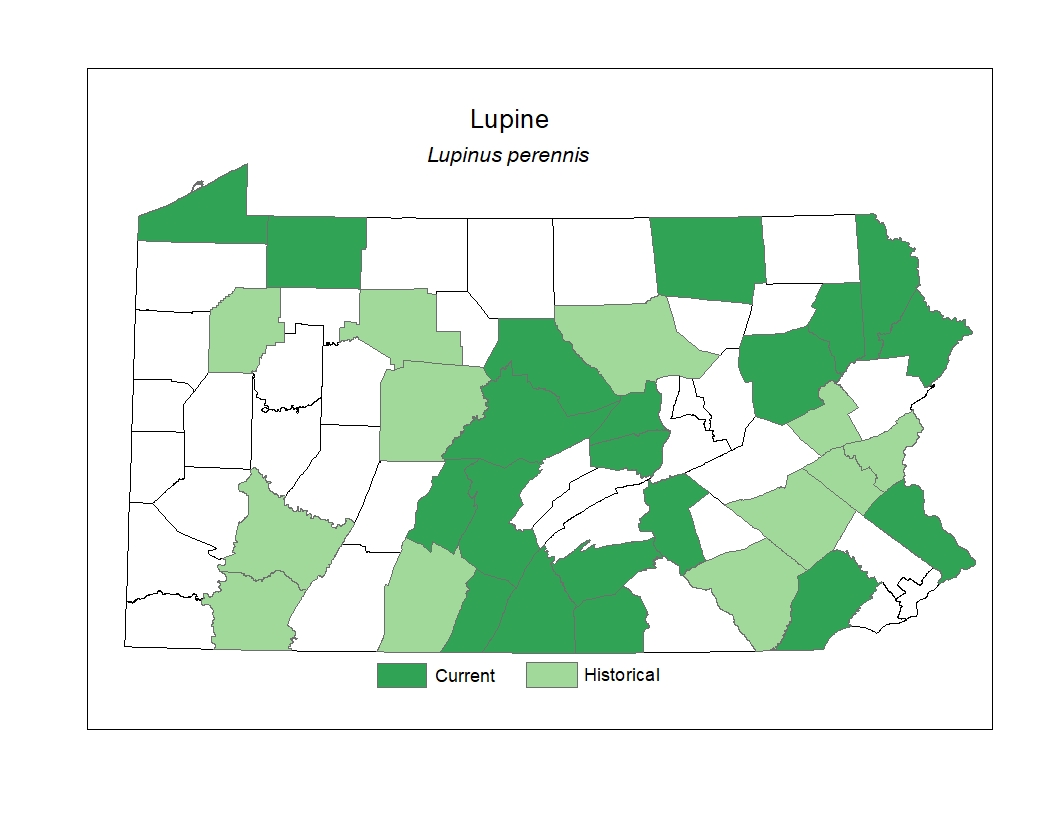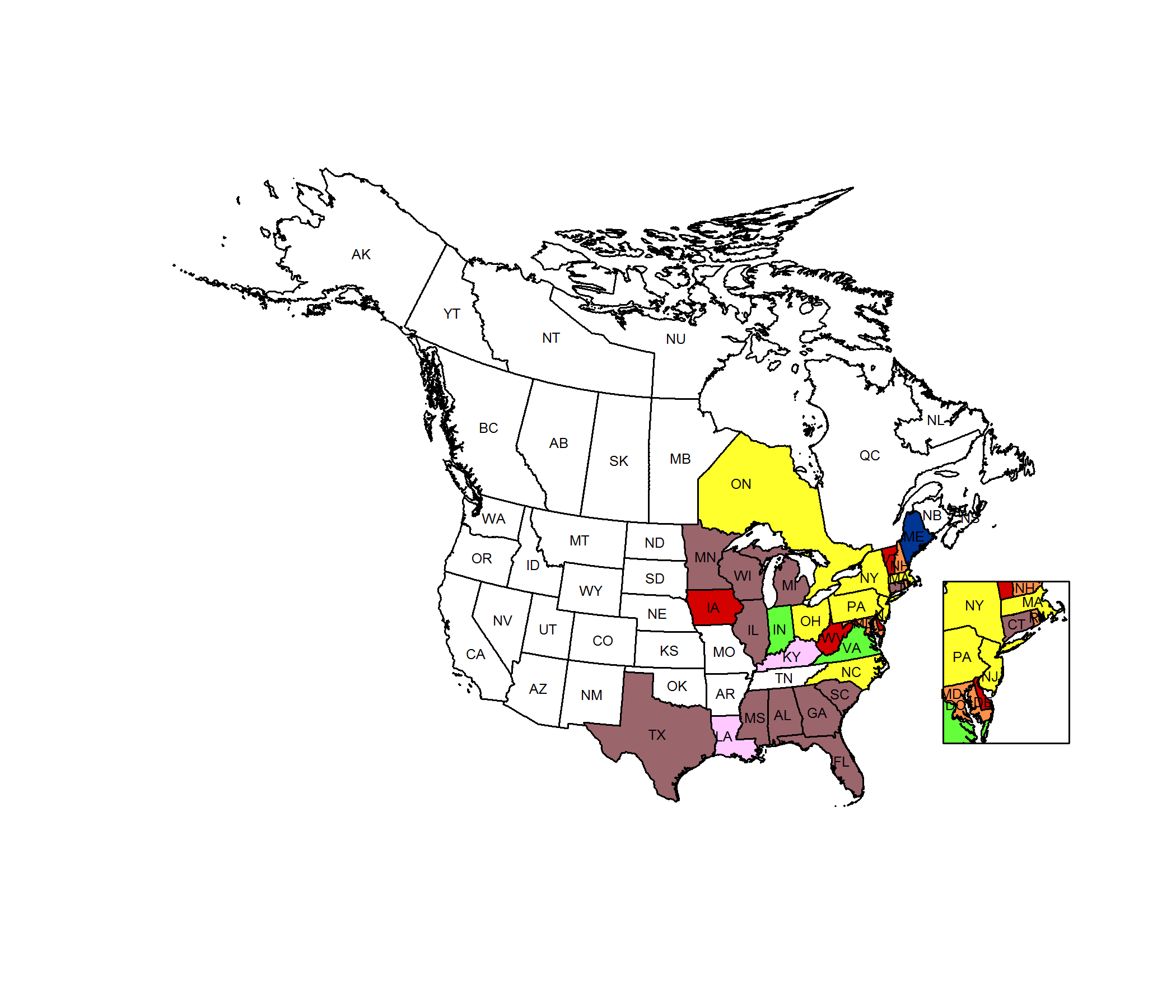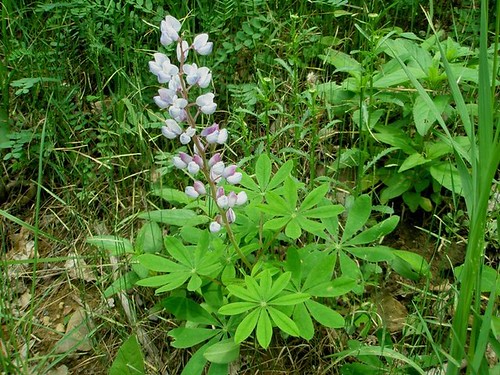 Species Factsheets
Species Factsheets
Lupinus perennis
Lupine
State Status: Pennsylvania Rare (PR)
PBS Status: Pennsylvania Rare (PR)
Federal Status:
Global Rank: G5
![]() rank interpretation
rank interpretation
State Rank: S3
Description
Lupine is a perennial herb with a hairy or hairless erect stem that may grow to 0.6 m in height. The alternately arranged and long stalked leaves have a very distinctive appearance, with the blade portion having 7-11 leaflets that radiate outward from a central point at the tip of the leaf stalk. The individual leaflets vary from hairless to hairy, are untoothed on the margins, and tend to be widest toward the bluntish tip. The attractive flowers, which appear mostly in May and June, are aggregated in an elongate cylindrical cluster on the middle and upper part of the stem. The flowers tend to be some shade of blue, but may be entirely white or pink, and average about 12-16 mm in length and have a pealike appearance. The fruit consists of a hairy pod-like somewhat flattened capsule up to 5 cm in length, and contains several seeds.
Rank Justification
Vulnerable in the nation or state due to a restricted range, relatively few populations (often 80 or fewer), recent and widespread declines, or other factors making it vulnerable to extirpation.
Habitat
The species grows in well-drained soil, particularly on woods borders, open woods, and various sorts of clearings.
Survey Dates
Flowers April - July
Distribution
Lupine ranges from New England to Minnesota and south into Florida and Texas. In Pennsylvania, it has been documented historically in many widespread counties.

Management
The viability of populations of Lupine and its habitat may be enhanced by avoiding the indiscriminate use of herbicides. Active management, such as mowing or invasive species removal, may be required in order to maintain populations.
Conservation Status Map


NatureServe. 2017. NatureServe Explorer: An online encyclopedia of life [web application]. Version 7.1. NatureServe, Arlington, Virginia. Available https://explorer.natureserve.org.
- NatureServe. 2018. NatureServe Explorer: An online encyclopedia of life [web application]. Version 7.1. NatureServe, Arlington, Virginia. Available at https://www.natureserve.org/explorer
- Pennsylvania Natural Heritage Program. 2018.
- Rhoads, A.F. and W.M. Klein, Jr. 1993. The Vascular Flora of Pennsylvania. American Philosophical Society, Philadelphia, Pennsylvania. Rhoads, A.F. and T.A. Block.
- 2007. The Plants of Pennsylvania: An Illustrated Manual. 2nd edition. University of Pennsylvania Press, Philadelphia, Pennsylvania.







